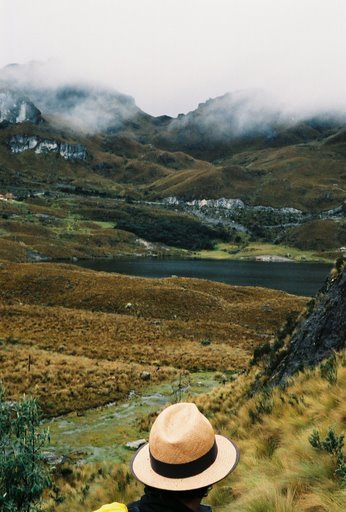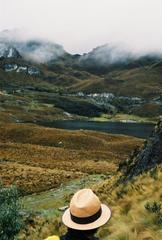
El Cajas National Park: Visiting Hours, Tickets, and Travel Guide to Cuenca’s Natural and Historical Heritage
Date: 14/06/2025
Introduction
El Cajas National Park, situated just west of Cuenca in southern Ecuador, is a breathtaking high-altitude sanctuary renowned for its spectacular Andean landscapes, remarkable biodiversity, and deep-rooted cultural history. Spanning roughly 28,000 hectares and reaching elevations between 3,100 and 4,450 meters (10,170–14,600 feet), the park offers immersive experiences across its diverse páramo, cloud forests, and glacial lakes. Historically significant as a crossroads for ancient Andean civilizations, El Cajas continues to be a place of spiritual reverence and ecological importance. This comprehensive guide covers the park’s history, cultural heritage, ecological value, visiting hours, ticketing, travel logistics, trail recommendations, and practical tips to ensure a safe and enriching visit.
For the most current information, consult official and trusted resources (Moon Travel Guides, South America Backpacker, Kuoda Travel).
Table of Contents
- Introduction
- Historical and Cultural Overview
- Visitor Information
- Trail Network and Hiking Highlights
- Activities Beyond Hiking
- Key Attractions
- Safety, Weather, and Packing Tips
- FAQs
- Summary and Responsible Tourism
- References
Historical and Cultural Overview
Pre-Columbian Heritage: Cañari and Inca Influence
The earliest known inhabitants of what is now El Cajas National Park were the Cañari, a sophisticated Andean civilization. The Cañari used the rugged terrain as a strategic passage for trade and cultural exchange between the highlands and the coast. With the Inca expansion into present-day Ecuador in the late 15th century, the area was integrated into the famed Qhapaq Ñan Inca road system, traces of which are still visible in the park. Guided hikes along these ancient paths provide a direct connection to the region’s indigenous and imperial past (Moon Travel Guides).
Spiritual and Living Traditions
Mountains, lakes, and rivers in El Cajas have long been revered as sacred in Andean cosmology. The park’s 786 bodies of water, including the sources of the Tomebamba and Yanuncay rivers, are still considered spiritually significant and essential to local indigenous and mestizo communities. Rituals and agricultural ceremonies continue to be performed, reflecting a vibrant living heritage.
Colonial and Republican Transformations
The Spanish conquest in the 16th century introduced new land uses, notably European agriculture and livestock, which changed the landscape but left many indigenous practices intact in remote areas. In the Republican era, El Cajas became recognized as a vital water source for Cuenca, a role it continues to play today (Moon Travel Guides).
Conservation and Ramsar Designation
El Cajas was officially established as a national park in 1996. It was later designated a Ramsar Wetland of International Importance, reflecting its critical role in water regulation, carbon storage, and as a refuge for migratory birds like the Andean condor and rare species such as the spectacled bear (Moon Travel Guides).
Visitor Information
Visiting Hours
- Daily: Most entrances are open from 8:00 AM to 5:00 PM.
- Recommendation: Start hikes early (before 10:00 AM) to maximize daylight and avoid afternoon weather changes.
Tickets and Fees
- Current Policy: Entry is currently free for both Ecuadorians and foreign visitors; all visitors must register at the Toreadora Visitor Center. Policies may change, so check official sources before your visit (LivingOutLau).
- Camping Fees: If you wish to camp, there may be a small registration/maintenance fee.
Getting There
- By Bus: Regular departures from Cuenca’s Terminal Terrestre (about $2 USD; 45 minutes). Return buses can be flagged at the roadside (LivingOutLau).
- By Taxi or Private Car: More flexibility and comfort; parking available at main trailheads (Kuoda Travel).
- Guided Tours: Local agencies in Cuenca offer full-day tours including transport, guides, and sometimes meals (Kuoda Travel).
Accessibility
- Trails: Vary from easy, family-friendly circuits to strenuous multi-day treks. Some accessible routes are available for those with limited mobility.
- Altitude: The park sits at high elevation; acclimatize in Cuenca for at least a day before hiking.
Guided Tours and Special Events
- Guided Hikes: Enhance safety and understanding of ecology and history. Available through official park guides and local agencies.
- Special Events: Cultural and ecological events are occasionally held; inquire at visitor centers or local tourism offices for current schedules.
Visitor Facilities
- Visitor Centers: The Toreadora Visitor Center provides maps, restrooms, ranger assistance, and a small café.
- Restaurants: Three restaurants near the main entrance serve local and international dishes.
- Camping: Permitted in designated areas; facilities are basic and weather can be harsh.
Trail Network and Hiking Highlights
El Cajas National Park offers over 15 marked trails with diverse scenery and difficulty levels (South America Backpacker):
- Laguna Toreadora Circuit (4.5 km, 2–3 hours): Moderate, scenic loop with panoramic views and Polylepis forests. Good for acclimatized beginners (Goats on the Road).
- Tres Cruces Viewpoint (8–10 km, 4–6 hours): Challenging hike to the continental divide and Luspa Lagoon (Howlanders).
- Llaviuco Lagoon Trail (2.8 km, 45–60 minutes): Easier, lower-altitude trail through cloud forest; excellent for birdwatching (Howlanders).
- Multi-Day Treks: For experienced hikers; traverse remote lakes and valleys, often requiring a guide (Howlanders).
Safety: Always register your route, carry a map or app, and consider hiring a guide for longer or technical trails (Happy Gringo).
Activities Beyond Hiking
- Birdwatching: Over 150 species, including Andean condor, giant hummingbird, and rare endemics (My Trip 2 Ecuador).
- Wildlife Observation: Spot spectacled bear, puma (very rare), deer, and wild horses.
- Photography: Dramatic landscapes, misty lakes, and unique flora make for excellent photo opportunities (Goats on the Road).
- Camping: Allowed in designated areas; register at the visitor center.
- Fishing: Permitted for introduced trout species with a license (National Parks Association).
- Cultural Exploration: Visit archaeological remains and sections of the Inca road (Global National Parks).
Key Attractions
- Tres Cruces Viewpoint: Highest accessible point (4,160 m) with panoramic views of the continental divide (Howlanders).
- Toreadora Lagoon: Central hub for hiking and wildlife.
- Llaviuco Lagoon: Accessible for birdwatching and gentle walks.
- Polylepis Forests: Rare high-altitude forests unique to the Andes (South America Backpacker).
Safety, Weather, and Packing Tips
- Weather: Highly variable—expect rain, fog, wind, and sun (2°C–15°C / 36°F–59°F) (WeLeaf).
- Altitude Sickness: Acclimatize in Cuenca, ascend slowly, drink plenty of water, and avoid alcohol.
- Packing List: Waterproof boots, layered clothing, rain gear, sun protection, water, snacks, navigation tools (app or map), and a camera.
- Trail Safety: Stay on marked paths, register your route, start hikes early, and carry a first aid kit.
Frequently Asked Questions (FAQ)
Q: What are the park’s visiting hours?
A: Generally 8:00 AM to 5:00 PM daily.
Q: Are tickets required?
A: Entry is currently free, but registration at the visitor center is mandatory.
Q: Is it safe to hike alone?
A: Solo hiking is possible on popular routes, but guides are recommended for less-frequented or technical trails.
Q: Can I camp inside the park?
A: Yes, in designated areas with basic facilities.
Q: What is the best time to visit?
A: June–September (dry season) offers the best weather but also more visitors.
Q: How do I get there from Cuenca?
A: By bus (approx. 45 min, $2 USD), taxi, private car, or guided tour.
Summary and Responsible Tourism
El Cajas National Park is a unique blend of natural wonder and cultural legacy—from ancient Cañari and Inca influences to modern conservation and community engagement. Its expansive lake systems, high-altitude forests, and rich wildlife offer unparalleled experiences for hikers, photographers, and cultural explorers alike. To ensure a safe and meaningful visit:
- Acclimatize before hiking.
- Register at the visitor center.
- Respect local customs and environmental guidelines.
- Support local guides and community tourism.
Ongoing conservation efforts and Ramsar recognition highlight the park’s ecological importance. Responsible tourism directly contributes to the preservation of this fragile ecosystem and its living traditions.
For the latest information, download helpful apps such as the Cajas National Park app, and consult official resources (Moon Travel Guides, South America Backpacker, Kuoda Travel).
References
- El Cajas National Park: History, Culture, and Visitor Information in Cuenca, 2024, Moon Travel Guides (Moon Travel Guides)
- El Cajas National Park Visiting Hours, Tickets, and Must-See Attractions near Cuenca, 2024, South America Backpacker (South America Backpacker)
- El Cajas National Park Visiting Hours, Tickets, and Complete Visitor Guide: Trails, Activities, and Attractions, 2024, South America Backpacker & Howlanders (South America Backpacker)
- Practical Visitor Information and Safety, 2024, Kuoda Travel (Kuoda Travel)
- El Cajas National Park Hiking Guide, 2024, LivingOutLau (LivingOutLau)
- Goats on the Road
- Howlanders
- Happy Gringo
- My Trip 2 Ecuador
- National Parks Association
- Global National Parks
- WeLeaf
- Official Park Website
